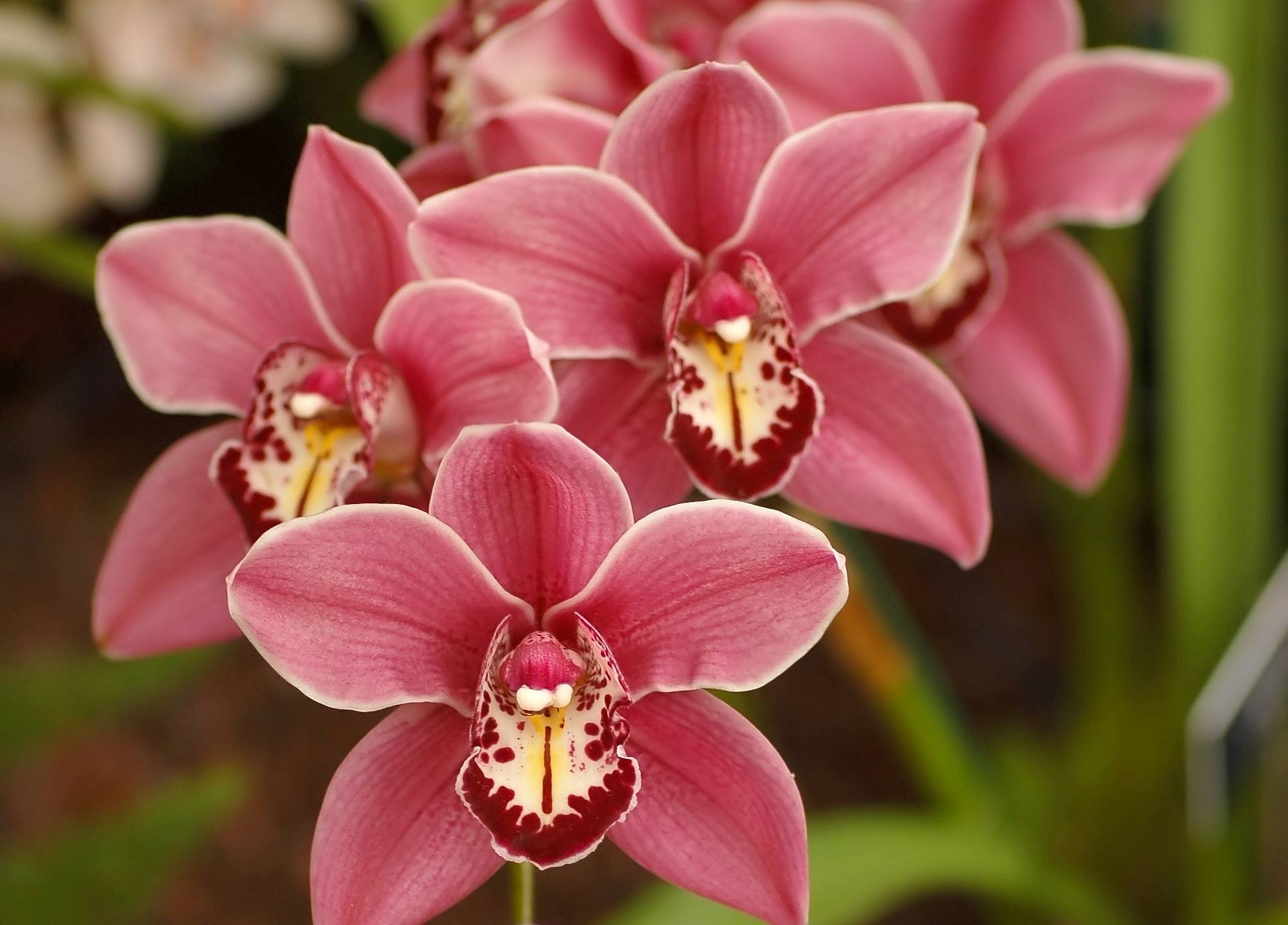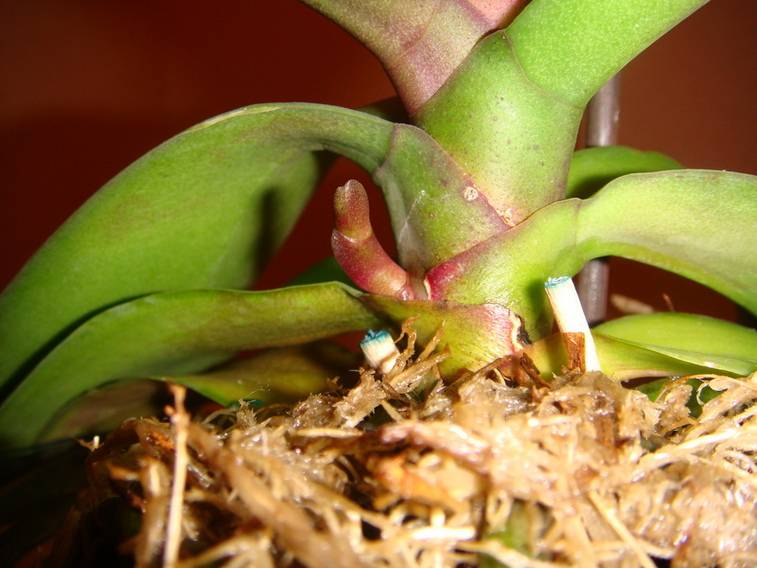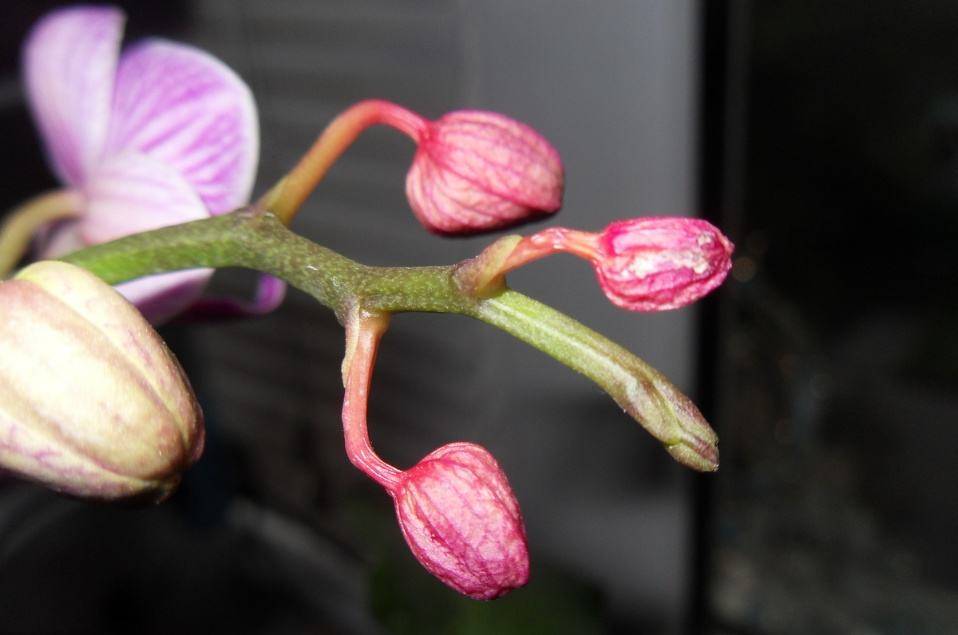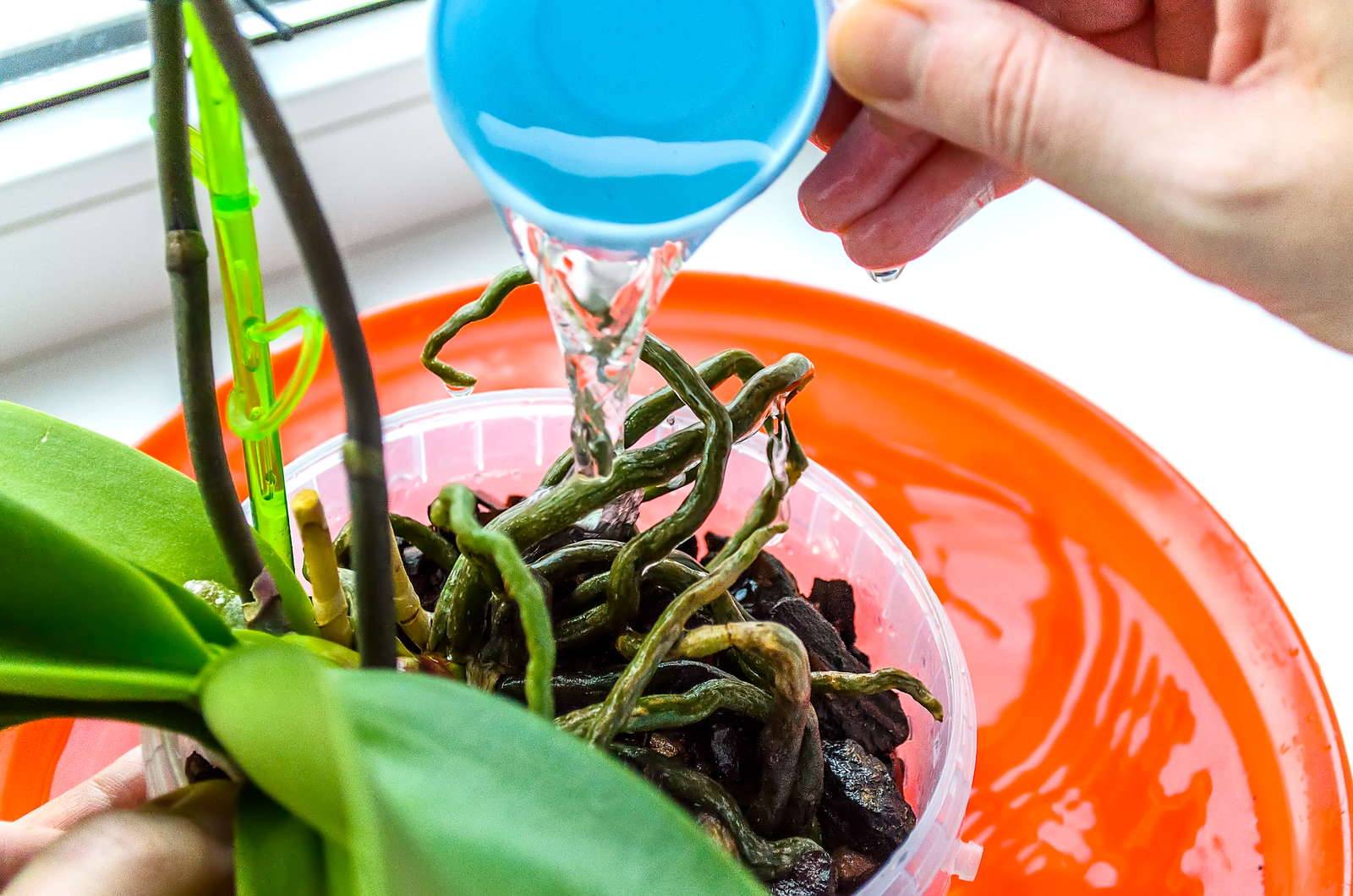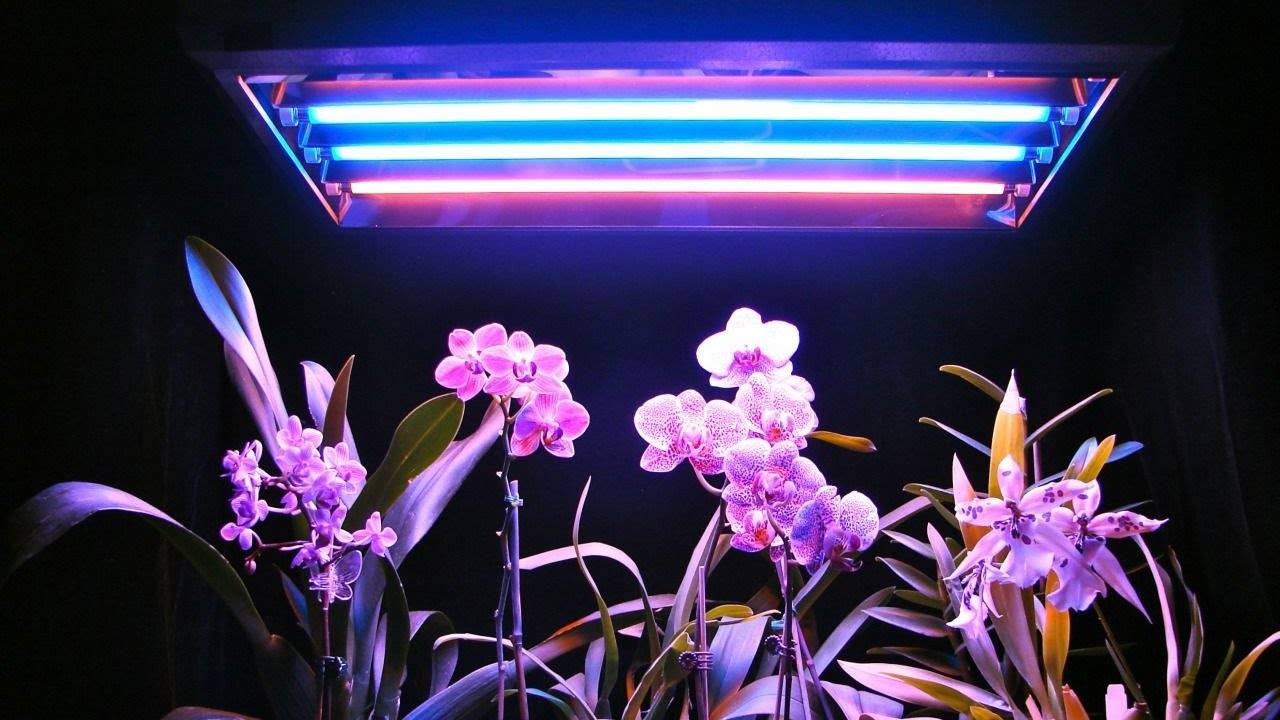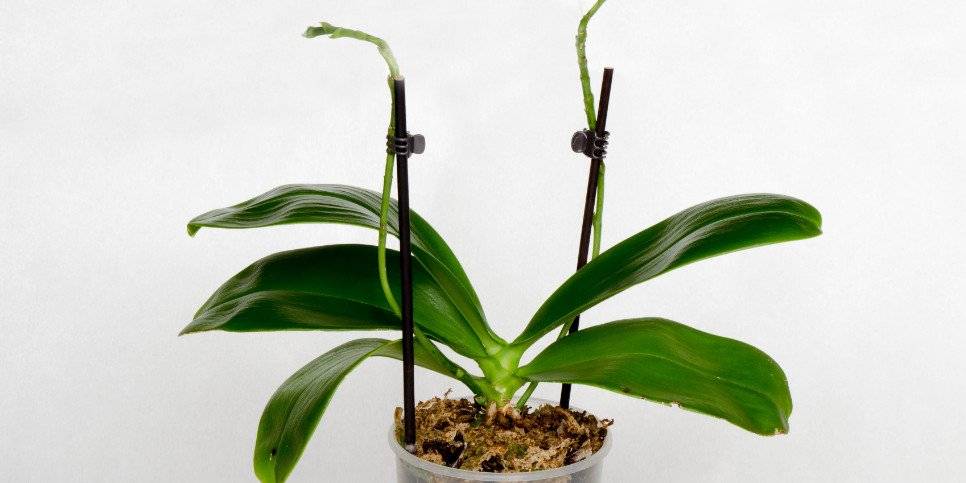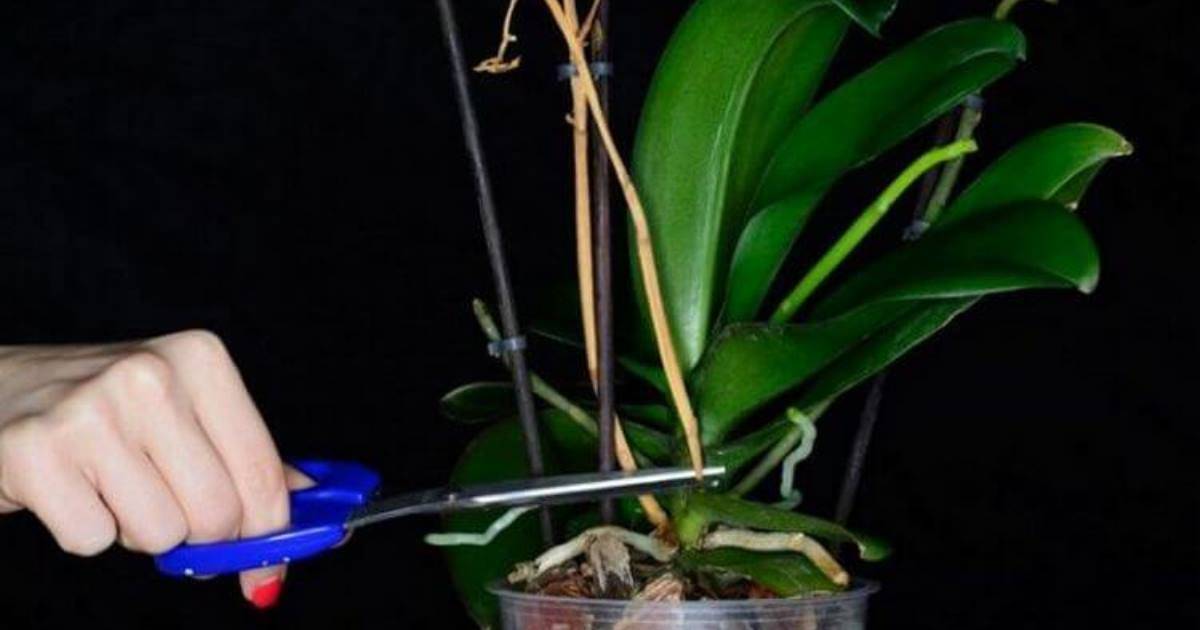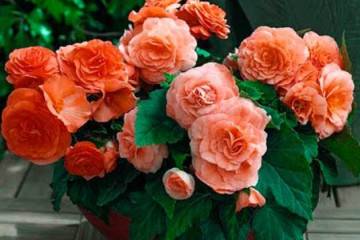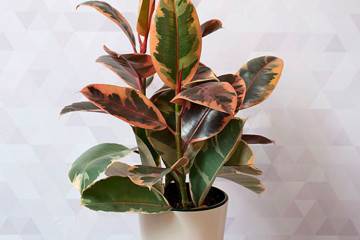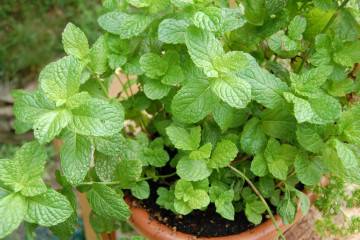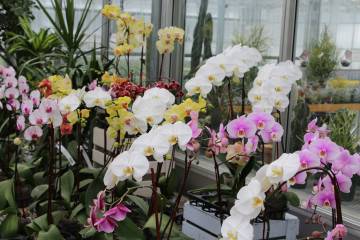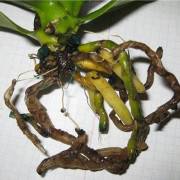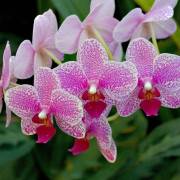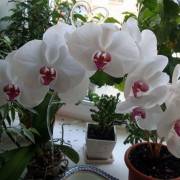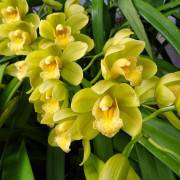How many orchid blooms - care rules
Content:
Orchid is a rather capricious plant. Many growers wonder how much an orchid blooms. Adequate care promotes annual flowering for up to 6 months, and sometimes even more. But you need to know how to care for a flower, then it will delight with its magnificent flowers for a long time.
When and how an orchid blooms
When buying a non-blooming orchid for your home, you need to inquire about its age. The orchid blooms one and a half to three years after planting.
Flowering period
The orchid can bloom at any time of the year. As a rule, vigorous flowering usually begins in the autumn-winter period. The main factor is favorable conditions. It is important that there is enough moisture, sunny color, heat, minerals, then the plant will delight with long flowering.
The flowering period also depends on the variety:
- phalaenopsis is able to bloom at any time of the year;
- the cymbidium begins to bloom in the autumn, which lasts until the end of February;
- dendrobium blooms in October and pleases with its flowers until the end of the year.
The term for the appearance of buds starts with the appearance of a flowering arrow, it grows from the bosom of the leaf plate. It should not be confused with roots or babies. The tsvetogon is distinguished by the presence of a pointed end, and also has a scaly coating. The peduncle grows up to several tens of centimeters in length.
The arrow can bend at the very beginning, and then stretch out to its height. If the pedigree appeared in the autumn or winter period, it is necessary to create additional lighting. Watering at this time should be more abundant than usual, while it is important to ensure that the roots do not rot.
The orchid blooms once a year. Flowering lasts from one to several months. The number of blooms is not limited in any way. The plant will delight with flowers throughout its life. One peduncle can bloom twice if not cut off after the first time.
Signs of the appearance of flowers
The flowers have an amazing structure. Their petals are like the wings of butterflies. With proper care, the plant pleases for a long time with its amazing buds.
Seals appear on the peduncle, which are subsequently transformed into delicate buds.
Leaving during flowering
It is important to organize proper home care for orchids during flowering. When favorable conditions are created, you can wait for the early appearance of buds on the peduncle. Care during the flowering period consists in timely watering, applying the required amount of fertilizer, maintaining certain temperatures, but most importantly, providing sufficient light. Poor lighting will significantly shorten flowering times.
Watering
The plant requires sufficient watering. The leaves will need to be sprayed with water from a spray bottle.Watering is carried out as the soil dries up. It is important not to overdo it so that the roots of the flower do not rot. The water temperature for irrigation should not exceed 30 ° C. You can water from a watering can. In this case, one rule must be remembered: an orchid will more easily survive a lack of moisture than an excess of it.
It is also important to monitor the humidity of the air, if it is low, the buds will dry out or fall off without blooming. Spraying will help humidify the air, you can also place a saucer of water near the pot.
Fertilizers
The orchid requires moderate feeding during the flowering period. You should not overfeed the flower, this will lead to the appearance of diseases. Many growers completely refuse to feed the plant during the flowering period. It is strictly forbidden to use mineral salts, they negatively affect the condition of the flower. To stimulate the appearance of flower buds, fertilizers based on potassium and phosphorus are used. Such feeding contributes to the appearance of strong healthy flowers.
Lighting and temperature
The orchid is a light-loving plant, and during flowering it is especially sensitive to light. In this matter, the following factors should be considered:
- diffused light is required, direct sunlight should be avoided. Light shading can be achieved with a matte film;
- orchid daylight lasts for 12 hours, in winter it is necessary to organize additional lighting using fluorescent lamps;
- in the autumn and winter seasons, shading can be omitted.
The orchid is very sensitive to heat. Drafts and excessively cool air should be avoided. Due to hypothermia, the buds may fall off. During the daytime, the temperature should be maintained within the range from 22 ° С to 24 ° С, and at night - not higher than 16 ° С.
Is it possible to transplant
Orchids are quite vulnerable at the time of bud emergence. At this time, they require careful handling and care. The plant will not tolerate transplanting, it should be left alone, not being moved from place to place. If you transplant a blooming orchid, its buds and flowers will begin to fall off.
The transplant is carried out when the plant has faded. But many growers are interested in when the orchid will bloom after transplantation. The flower will take some time to recuperate. It is important to create favorable conditions for the flowering arrow to reappear.
Peduncle support
Peduncle support is usually not required. This should only be done under special circumstances. If the arrow has grown long enough, goes down below the level of the flowerpot, it can be tied up.
What to do if it does not bloom
Orchids are acquired so that they delight with their beautiful delicate flowers. But what if the plant does not bloom, what measures should be taken? The reasons may be different:
- lack of light. If a flower lacks light, it will not bloom. It is necessary to create a 12-hour diffused lighting;
- improper feeding. It is not recommended to feed the orchid with nitrogen, but if this happens, you need to wait until the nitrogen is processed, and during this period apply fertilizer that includes phosphorus;
- dry air is destructive. In order for the orchid to bloom, it should be sprayed;
- over-watering will cause the buds and buds to dry out and fall off. Abrupt cessation of watering will also negatively affect flowering.
Creating favorable conditions will lead to the appearance of the long-awaited flowers. First of all, one should understand what exactly caused the long absence of the peduncle.
Bloom extension
How much an orchid blooms at home depends on several factors. First of all, attention is paid to the temperature and light conditions. Failure to comply with the conditions and mistakes in care will lead to the opposite result. You can control the duration of flowering from the moment the buds appear.
To prolong the flowering of an orchid, two important points need to be considered:
- the value of day and night temperatures;
- the duration of daylight hours.
By creating a certain night temperature regime, you can control the timing of flowering. The warmer the temperature at night and the lower the level of difference with daytime temperatures, the faster the orchid will bloom and bloom. By lowering the night indicators to 12-14 ° C, you can achieve a slowdown in the flowering period. The basis for long flowering is to create a difference between day and night temperatures within 7 °. Excessive heat is contraindicated even during the day.
It is very important not to overfeed the plant during the flowering period, but it is best to completely abandon fertilizers at this time. The introduction of dressings will significantly reduce the flowering period and even cause the buds to wither soon. In order for the orchid to delight with its flowers for a long time, you do not need to move the pot with the plant during the flowering period.
Post-flowering care
After the orchid has faded, there will be no flowers or buds left on the flowering arrow, it becomes completely naked. The plant goes into a dormant period. At this time, you need to prune.
After flowering, the peduncle begins to dry. Do not cut it off right away. The leaves and stem will receive nutrients from the drying peduncle for some time. You can only remove the arrow when it has completely wilted, acquired a yellow or brown color. The spoiled part of the stem is cut off with scissors or shears, and the cut is lubricated with wax to exclude decay. The arrow is removed almost entirely, leaving a small area about 2 cm long.
If the orchid has faded in the spring, the flower stalk may not dry out. In this case, you should not trim it. It is highly likely that he will still be able to bloom. After trimming, the pot is left in the same place. The orchid does not like change. Watering during the dormant period is reduced, while it should not fall into the leaf axils. The flower needs to be sprayed.
After a dormant period, the orchid will again release an arrow, on which new flowers will begin to appear. The plant will again delight with graceful buds. After four months, flowering can be re-stimulated.
Only proper care will significantly extend the flowering period of an orchid at home. The plant will delight others with its amazing flowers for a long time.
